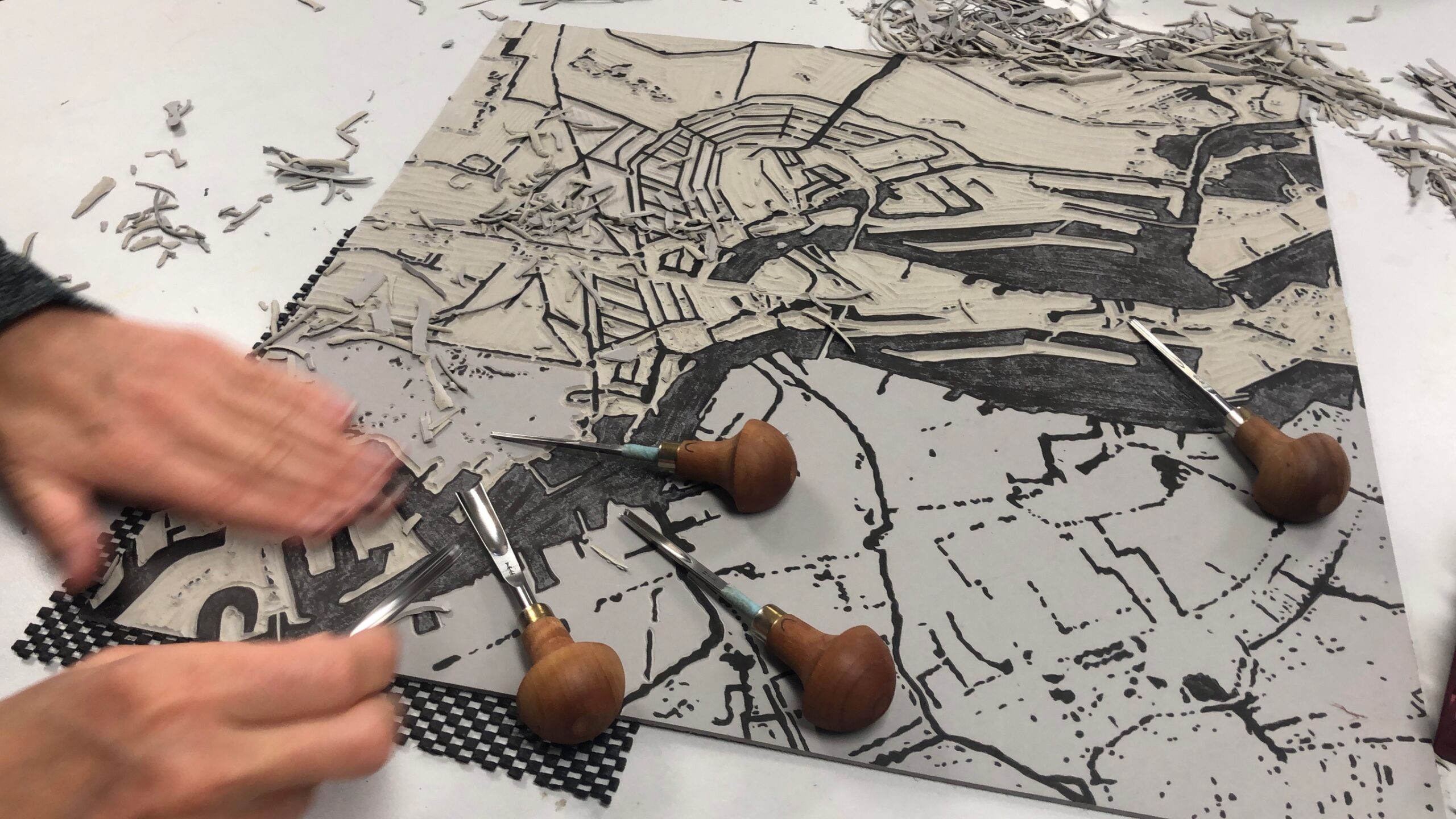A combination weekend of two of the most enjoyable techniques: during this workshop you will work with the wooden and lead letters on the letterpresses on Saturday, and on the intaglio presses with linoleum on Sunday.

Linocut is one of the few graphic techniques that “everyone” has done, back in school. Still, the possibilities might surprise you. This course covers a variety of techniques, including the reduction technique.
Linocut is a form of relief printing: the part that has not been cut away, and is therefore higher, is printed. In the course you will learn the technique of linocut from a graphic artist who specializes in this technique: Alette de Roos shows how a seemingly simple material print can lead to extraordinary results, with multiple colors and multiple nuances.
Without wearing out the plate, quite a lot of prints can be made from linoleum or woodcuts. You don’t have to be a drawing talent to work in this technique. It is a simple technique that nevertheless offers many possibilities. Using carbon paper, a photocopy or drawing can be transferred to the sheet of linoleum.
The tools and methods of linocut and woodcut have many similarities. By using different gouges in one plate, each carved surface or line takes on its own character. Carving is a play between light and dark surfaces, and between tight and ragged, and between thick and thin lines.
Alette de Roos [insta: @alette.de.roos] founded The Printmakers Club last year, a collective for enthusiasts who also want to get started with this printing technique at home.
Erik: “Very nice, this letterpress technique. Quick results, and still lots of opportunities to delve deeper. And the instructor is insanely knowledgeable!”
A combination weekend of two of the most enjoyable techniques: during this workshop you will work with the wooden and lead letters on the letterpresses on Saturday, and on the intaglio presses with linoleum on Sunday.
What you learn about presses, gouges and inks at lino on Saturday, you can apply to wood just a little differently on Sunday.